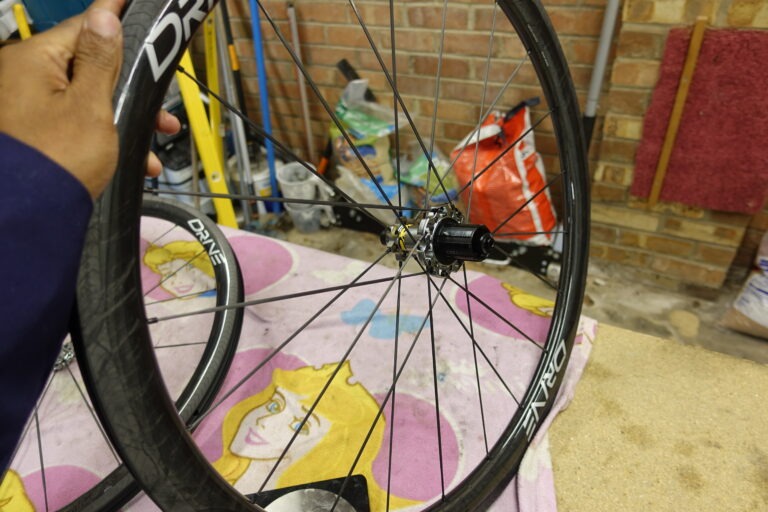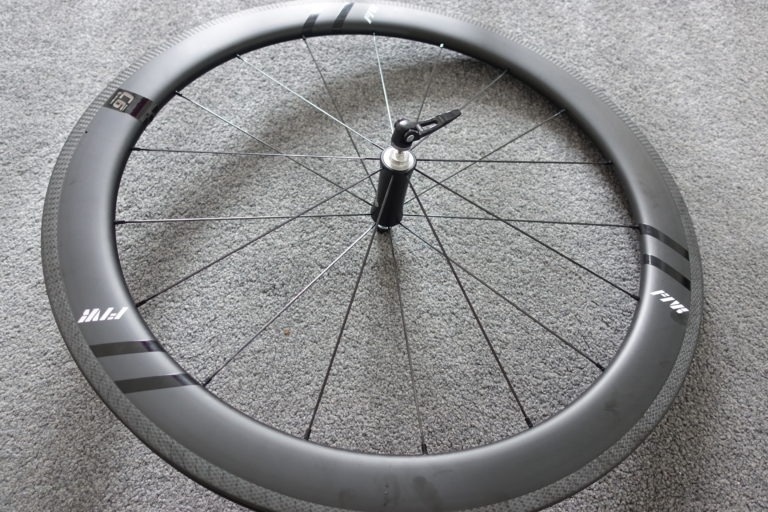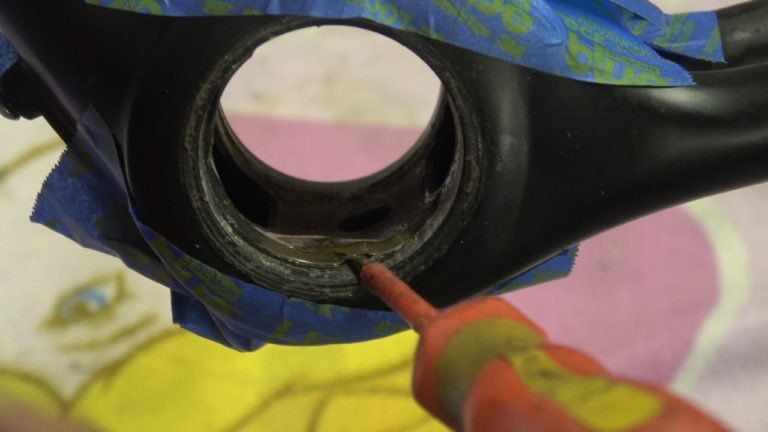Bike Bearing Grease: A Practical Guide to Bearings and Assembly for Bikes

Introduction
Grease is an often talked about but little understood. It can have a significant impact on performance on a bike specifically in the area of transmission frictional losses (watts). This guide covers the practical aspects of using grease as a lubricant and as an assembly aid.
Following a number of questions arising from a video where the bearings on a set of Winspace wheels were changed, the guide below gives you a brief synopsis of grease for bicycle applications.
The technical info has been dampened to appeal to a wider audience.
Typically, grease is used for either lubricating moving parts or as an assembly aid. The types of grease for these two applications are quite different.
Grease in moving parts such as bearings is considered the second biggest contributor to drag after the bearing seals. Grease is usually petroleum based with additives and thickeners. A universal scale for measuring grease is called the NLGI number, alternative standards do exist but this is the most widespread. It is shown below
| NLGI number | ASTM worked (60 strokes) penetration at 25 °C tenths of a millimeter | Appearance | Consistency food analogy |
|---|---|---|---|
| 000 | 445-475 | fluid | cooking oil |
| 00 | 400-430 | semi-fluid | apple sauce |
| 0 | 355-385 | very soft | brown mustard |
| 1 | 310-340 | soft | tomato paste |
| 2 | 265-295 | “normal” grease | peanut butter |
| 3 | 220-250 | firm | vegetable shortening |
| 4 | 175-205 | very firm | frozen yogurt |
| 5 | 130-160 | hard | smooth pâté |
| 6 | 85-115 | very hard | cheddar cheese |
The scale is straightforward. As the number increases, the grease becomes more viscous. Thicker greases are used at higher temperatures.
Lubricating Grease (Bearings)
For bicycle dynamic applications, those who want to save the absolute maximum would use a light oil and remove the bearing seals to minimize friction. This has diminishing returns as the maintenance intervals would be frequent and the costs are prohibitive. On long rides, the bearing may be in a state with no lubrication once the oil has “leaked” out. A slightly better option is to use a non-contact sealed bearing and either a 000 or 00 grease. This provides very low friction and will easily have sufficient containment to last 10-20hours (this range increases with 00 and thicker greases). This is common amongst triathletes. 000 grease can be extremely expensive.
It is very important to prevent overfilling of bearings. Only 33% of the unoccupied volume is required to be filled, it does not and should not be packed fully. Doing so will cause the bearing to overheat and lead to premature failure. It also increases friction exponentially. As the bearing rolls, the grease heats up and it turns into a semi oily mixture, over time this will leak out of the seals so they will need repacking. It should be noted that the bearing friction will reduce once they are warm. Competitors in events such as time trials would benefit from “warming” their bike up beforehand.
Assembly Grease (Anti Seize)
For assembling components, the requirements of the grease are very different, they are in a “use once” and then forget application to aid assembly and disassembly. In this instance, the aim is to minimize installation/removal friction and a slightly thicker grease is preferred. An NLGI 2 or higher would be ideal. It is thick enough to adhere to surfaces to minimize friction and viscous enough to prevent dripping off. It is important to minimize the amount of grease used for assembly. It is possible to Hydrolock components and thus shift their desired position by using too much grease. Copious grease attracts dirt and grit which emulsifies into an unwanted grinding paste leading to wear of adjacent parts.
Grease as a Water repellant
Using grease as a water repellant is common especially in sealed areas such as bottom brackets and wheels. A minimum of Grade 2 or higher will be required for this application as it must have sufficient viscosity to prevent wash off. Grade 3 is recommended as it has better resistance to dirt and grit emulsification.
Grease Composition (Lithium, Teflon, Copper etc)
The NLGI rating will effectively control the materials that are used. For example, copper grease is rarely found in low NLGI numbers because it contains copper as an abrasive and is unsuitable for moving parts, this is often why it is called anti-seize compound. In contrast, lithium and teflon are found at the more dynamic end of the scale owing to reduced friction.
Carbon Grease / Fiber Paste
Carbon grip paste is often described as a grease. The solvent medium is a grease with abrasive particles embedded within the material. It is designed to increase friction by providing “bite” between surfaces. It does not function like grease in the typical sense and is not covered in this guide.
WARNING
There is documented evidence of grease attacking carbon fibre. Strictly speaking, it doesn’t attack the carbon fibres, it attacks the epoxy. Some grease and carbon fibre combinations are more prone to this type of chemical attack than others.
Recommendations
For most, it is not practical to have multiple different grease types sitting on the shelf. For this kind of user, an NLGI 0, 1 or 2 would be recommended.
For someone who is keen to go fast, an NLGI 00 or 000 grease would be recommended for bearing lubrication.
For assembly applications, NLGI 2 or higher is recommended.
Recommended brands
- Shell Gadus (formerly called albida)
- Mobil SHC (007 is a very popular choice as a go to all grease)
- Total Multis
- Castrol Spheerol
All of the above greases are available in different viscosity grades.





some people use grease when installing bearings in the bottom bracket like this guy
https://youtu.be/6gkPrRtwlLA
is that advisable? in this case your instructions say to use primer + retainer instead
thanks
starts here
https://youtu.be/6gkPrRtwlLA?t=410
I would recommend activator and retaining compound unless it’s a metallic interface.
I had a look at some of the brands that you recommend, they all have a huge selection can you give some hints on what is important for the bike? What’s the temperature range that one should look, high speeds, low speeds?
I would go for Mobil SHC Grade 0, that should cover most eventualities.
I use super lube.
Super Lube is an exceptional grease – use it in industry under terrible conditions and it works extremely well.
I enjoy lubricating my balls
Thanks for the info on grease – very useful. Not a topic much spoken about in cycling circles.
Hi, Watched the video, very interesting. I was looking for a small quantity of NLGI 0 grease for the bearings etc and was wondering if this would be appropriate? https://www.lubefinder.com/shell-gadus-s2-v220-0.html
Seems to be sort of difficult to find a small amount. Thanks, S
It is quite cheap if you get a tube. It’s much cheaper than bike specific finish line type grease.
Hi Hambini,
must say how useful I have found some of your videos on youtube. Your engineering analysis and scrutiny is first class. Keep it up.
My question is fairly simply regarding bearing grease selection.
Taking NTN LLB bearings as the example, then how much difference do you estimate it would make to rolling resistance (maybe best expressed in Watts) in a typical bike wheel bearings set up (say 6 small bearings in total, like 6802s, across the 2 wheels including the freewheel) using 2AS (Shell/Alvania Grease S2) compared to 5K (Kyodo Yushi/Multemp SRL) grease ?
Would it even be measurable ?
Cheers
Andrew
Hi Hambini,
must say how useful I have found some of your videos on youtube. Your engineering analysis and scrutiny is first class. Keep it up.
My question is fairly simply regarding bearing grease selection.
Taking NTN LLB bearings as the example, then how much difference do you estimate it would make to rolling resistance (maybe best expressed in Watts) in a typical bike wheel bearings set up (say 6 small bearings in total, like 6802s, across the 2 wheels including the freewheel) using 2AS (Shell/Alvania Grease S2) compared to 5K (Kyodo Yushi/Multemp SRL) grease ?
Would it even be measurable and what sort of magnitude would we be talking about ?
Cheers
Andrew
It’s a very small difference, less than 1W. But you get a compound gain so if you did over the whole drivetrain you would gain more than any of those OSPW type systems.
Cheers,
so you are saying over 6 wheel/freewheel bearings that could be circa 4-5w (just taking your <1w x6) which is appreciable.
Thanks
Andrew
Hambini please let me know where should I order 5k grease or at least equivalent in UK or Europe. I live in Norway and it’s impossible to find this 5k grease. I follow your advice and order all NTN bearings for my Hyper 45 wheels. Thanks!!
Shell Gadus or mobil XHP should be available
Hi Hambini. Thanks for enlightening us with this article on bearings. I have a Lucas White Lithium Grease (https://lucasoil.com/products/grease/white-lithium-grease). Just now I read that is not recommended for wheel bearings. Since it is NLGI #2, should I go ahead and apply it?
Thanks in advance!
You might find it a bit thick and it will need to get going before it really loosens up. ie 5-6 miles to get it hot.
If one is servicing hub bearings would you recommend removing the bearing from the hub, clean, re-grease and press it again, or could one service it without removing it. Thanks and huge congrats for the content, videos and blog.
You should really avoid removing the bearings to clean them. They will indent the races on the way out. I would flush them and grease them in situ if you can by popping one of the seals off.
What solvent would you recommend flushing them out with?
citraclean, or kerosene
Will spray, non-residue brake cleaner be okay on the seals? I have used it before on bearings with seals removed and it got rid of the grease and cleaned them up pretty rapidly.
yes but you will need to repack it.
Does this advice not to remove bearings for cleaning still hold if we push them out rather than knock them out? I’m looking at wheel hub and freehub bearings that are either not accessible or difficult to access whilst in situ. I get that impact will damage them but no impact pressure to pull or press out still damage?
Thanks and this is a useful discussion.
This advice is valid on any interference fit. If you break that fit then you have to reverse load the bearing and it will brinnell.
Thanks
Hi, I get this is a discussion related to road bike wheel bearings and I have found it useful. But I ride mtb and have a query about suspension greases. The manufacturers love to say that users should only use their brands because of blah damage blah seals rubber blah (or whatever the excuse is) such as SRAM butter or Slickoleum or whatever honey Fox wants us to use. Is it really neccessary to stick to their greases (they tend to be using calcium based greases as opposed to lithium base) Is this neccessary or can we avoid the idiot-bike-rider-with-too-much-in-their-wallet tax by using existing alternatives?
http://slickoleum.com/specifications.html
This only presents a problem if the seals on the bearings will be attacked by the grease. In general, the seals are NBR or possibly viton. You can look up the material to substance tolerance and then decide if it is going to be attacked. Most off the shelf greases don’t attack NBR or Viton
Most bicycle bearing grease has a fancy marketing name like “Shimano Premium Grease”. I cannot find a NLGI number or any specifications of it. That can mask a ‘just buy me and do not ask or look elsewhere’ scam. Does anyone have a clue which NLGI number it has?
Are there additives in there that could make it better than the Hambini recommendations of NLGI zero grease? How does it compare?
Does the article suggest that it is beneficial to flush the grease out of new bearings and replace it with 30% NLGI zero (or more liquid) grease for optimal performance?
Is there a amount of years grease goes bad when wheels with sealed bearings (DT swiss) are not used?
I used to flush out grease with a spray can of silicone grease or even WD40. Placing the nozzle of the spray can right against the bearing where I wanted to flush and tilting the bearing so everything can run out, helped by gravity. Is that a good method?
Using petrol in that way with a syringe feels a bit awkward.
PS: Great articles Hambini! Good that you move away from the YouTube power coup / dictatorship.
grease does tend to absorb water over time and break down. Typically one year max is the in life unless it’s sealed. Flushing grease out for the sake of it is not recommended, the speed differential is small but the time taken to do it is quite long so it’s only advisable if you really are going for the small gains.
Hey Hambini, Thanks for all your work. Do you think I can use the Shell Gadus S2 V220 0 directly on carbon frame, between the headset bearing and it for example? I read somewhere (!) it isn’t great to use lithium grease on carbon frame because “the products contained in it can damage the resin that binds the carbon frames”. thx.
for modern resins it shouldn’t attack them but I would try a small test area first.
Thanks
Hi Hambini, thanks for the great info!
few questions as I’m new to bike maintenance,
1) I mostly ride in summer, dry condition to the end of fall with wet surface, but never while it’s raining; and service interval has higher priority than performance, would NLGI 1, like Gadus S3 and S2 V220 give me a good performance while only need to service the bearing every 8~12 month? or the Mobile 007 should be able to last?
2) does it matter if the bearing is stainless or ceramic? I’m hoping to use the same grease for BB and on the wheel hub.
3) before applying the new grease, do i need to remove the factory grease? (use a degreaser) or it’s okay just to open the seal, wipe clean then add new one into the mix?
Thank you and Happy New Year!
Eric
Going through your questions in turn. 1. The service interval is not really judgable on a comment. You’ve got factors like salt on the road and whether the ingress penetrates into the bearing. I would go with the NLGI 1 and then keep an eye on it and see how you get on. It’s not really a concept that you can have a blanket answer to. 2. Most bearings in a wheel hub will have some steel in there somewhere, so you’d need the grease in both respects. 3. Yes you would. Degreasing and leaving it to dry is better than wiping it off because you will inevitably leave some residue.
Thanks for your quick reply; for the bearing in the freehub I’ll try the NLGI 1 as you suggested and see how it goes.
For the ratchet found on DT Swiss, Enve hub or the campy pawl system, would using the same grease be ideal? or #2 will be more ideal?
Thank you again
Eric
You need to be careful around the pawls, if the grease is too thick the pawls will not disengage and engage properly. Thinner grease in this area is better. NLGI 0 or thinner would be better
Is NLGI 1 considered thin? or 0 is better?
Thank you
Eric
The lower the NLGI number, the thinner it is.
Hi Hambini,
I’ve read and heard things before about greases and lubricants, particularly with regards to using a thinner grease or even oil to reduce friction, as you touched on as well. My question is, what are repercussions of a bone-dry bearing with absolutely no lubrication – besides oxidation and ingress of debris? Why do these smooth metal surfaces need lubrication in the first place?
There is always a bit of slippage so having a bone dry bearing increases the local friction coefficient, so you get a bit more heat. Basically you’ll get it hotter and the metal will locally fail faster.
Which anti seize do you recommend?
I use Favero Assisoma Shi power pedals, which replace the spindle and bearings on a shimano pedal with the favero spindle, which uses a journal bearing. What grease would you apply when assembling that. Something rather light I would presume like 0 or 00?
Hi Hambini, interesting and helpful site. I love to send you the starter kit for RB or XC. Can you email me so I can send the starter kit to you to give it a go.
Good morning
congratulations for your work
I am considering purchasing NTN LLB bearings for my wheel hubs. I never ride in the rain. Should I regrease the bearings or should I change them? approximately how often?
Thank you vers much
Is Shell gadus s2 v220 0 a good choice as a “do it all” grease?